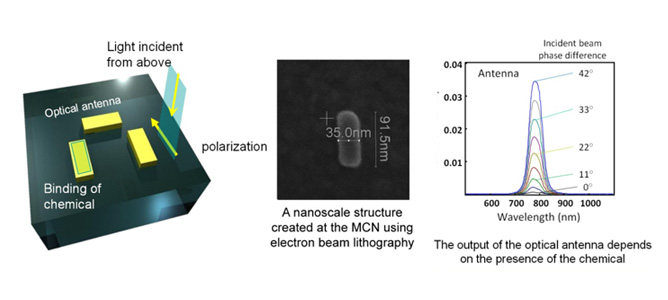Detecting chemicals and biological contaminants

October 2011
In his Fellowship project, Dr. Tim Davis from CSIRO is trying to develop new ways of detecting chemicals and biological contaminants, for applications in environmental monitoring and in biomedicince. As different chemicals interact with light in different ways, he is investigating methods of using light to detect and identify the different chemicals and biological substances.
The key issues are discrimination - being able to distinguish between similar chemicals or biologicals - and sensitivity - being able to sense low concentrations. The project aims to address this problem by controlling the properties of light at the nanoscale which Dr. Davis hopes will lead to better molecule discrimination and sensitivity. In particular, he will interact light with metallic nanostructures – these act like antennas for light.
The facilities at the MCN will allow the fabrication of the optical antennas at very small size scales, well below the wavelength of light, as well as the combination of them to control the light properties to study how it interacts with molecules.
This work will lead to new ways of detecting contaminants in the environment and new methods for screening for disease. Moreover, the technology has applications in other areas such optical communications and improving solar energy conversion.


